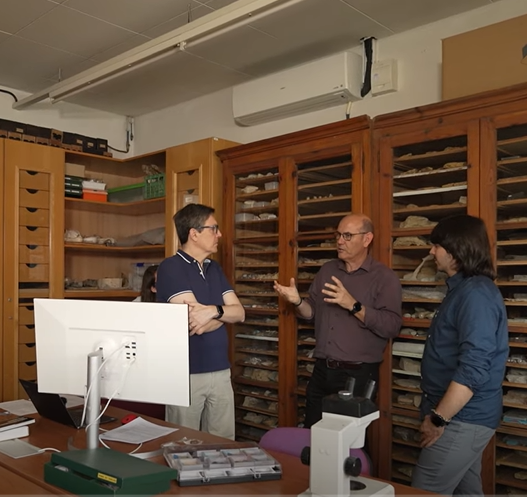Discovering the Past through Amber: The CREI Project presented to ESO students
Recently, the Amberia research group, led by Dr. Delclòs from the Biodiversity Research Institute of the University of Barcelona (IRBio), participated in a round table at the Natural History Museum in Madrid, where they shared with 70 ESO students the results of the CREI research project (Cretaceous Resinous Interval), funded by the Ministry.
The project focuses on researching the events of the Cretaceous, a period that represents a time of rapid evolutionary change and diversification of organisms. During this period there was an extremely abundant production of resin, amber. Amber is of great interest because inside it you can find many organisms that inhabited the forests of the past, which have been perfectly preserved as fossils. Today this amber allows us to know the Cretaceous forests in great detail. Through the analysis of fossil resins and using advanced statistical models, we can decipher relevant information about the biodiversity and environmental changes of this era.
One of the aims of the project is to be able to make known this very interesting period of the earth's past to the general population and especially to the younger population in order to create a scientific vocation. Antonio Monléon, researcher of the CREI project, shares: "We are excited to be able to share these resources with schools and hope that our work will inspire students to take an interest in science and research. The collaboration with the Museum of História Natural de Madrid has been a success and we would like to replicate this experience in other places."
In addition, knowing the drastic changes of the past and how they affected the planet, can also help us understand how current changes, global change, climate and ecological crisis can affect the planet we know today. For this reason, the project has created a didactic video that explains in a clear and accessible way what the CREI is, its biological importance and how data and statistics are used in its research. The video is available in three languages: Spanish, English and Chinese, to reach a global audience.
